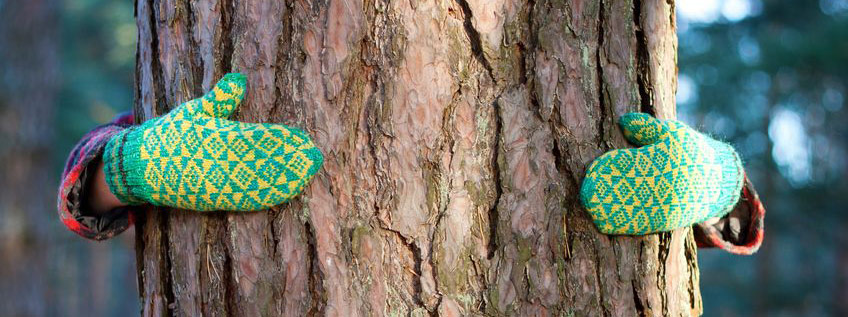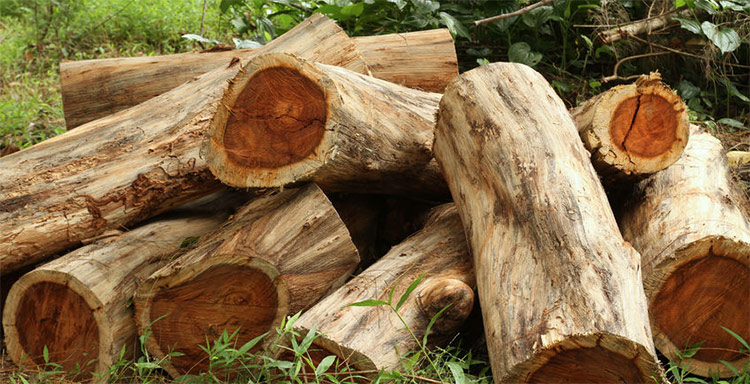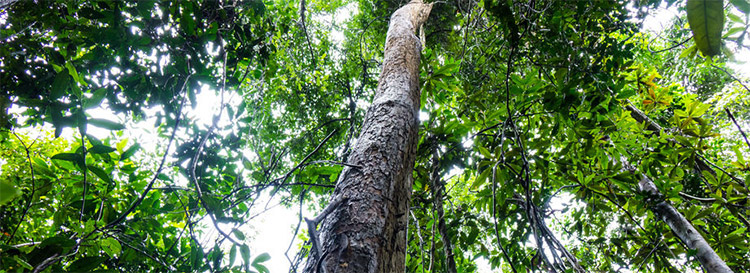Guide to Essential Oils and Sustainability

Conservation and Sustainability of Essential Oil Bearing Plants
To produce even a little amount of essential oil, a significant amount of botanical material is required. The yield for essential oils is very low, and the surge in consumer demand is putting a strain on the sustainability of many botanicals that are used for their production.
We cannot assume that the essential oils that we have easy and reasonably affordable access to today will be available to us indefinitely if we do not each play our part in responsible usage, conservation and sustainability efforts.
When we talk about essential oil sustainability, what we're really talking about is the sustainability and conservation of the plants that are used in the production of essential oils. The term used for such plants is essential oil bearing plants.
As users and practitioners that work with essential oils, there are steps that we each can take to do our part to ensure that we are not contributing to the endangerment of essential oil bearing plants:
- Whenever possible, strive to purchase only from reputable suppliers that describe their conservation and sustainability efforts, particularly for essential oils produced from threatened, at-risk or endangered species. And of course, there is a greater risk of adulteration for essential oils produced from botanicals that are threatened, vulnerable or endangered.
- Less is more. When using essential oils, it is best to use only as much essential oil as you need to achieve the benefit that you are after. Don't use 10 drops when a single drop will do. This applies for all essential oils, not just those that are known to be threatened.
- For essential oils that are produced from endangered species, strive to use an alternative oil in its place whenever possible.
- Familiarize yourself with the shelf life of essential oils and purchase only the amount of an essential oil that you expect to use within its suggested shelf life. A sale may be wonderful and may tempt you to purchase a larger quantity of an essential oil, but it's wasteful if the oil isn't used before its therapeutic value diminishes.
- Essential oils oxidize over time. Generally speaking, oxidation can negatively impact the therapeutic benefits of essential oils. Storing essential oils improperly can accelerate oxidation. Although it's not directly related to sustainability, be sure to store your essential oils properly.
The Conservation Status of Essential Oil Bearing Plants

Some plants are at greater risk of endangerment and extinction than others. The International Union for Conservation of Nature (IUCN) maintains a helpful searchable database known as the IUCN Red List of Threatened Species. Not all essential oil bearing botanicals are included, but more species are gradually added to their database.
The IUCN describes their database as follows: "The IUCN Red List of Threatened Species(TM) is the world's most comprehensive inventory of the global conservation status of plant and animal species. It uses a set of criteria to evaluate the extinction risk of thousands of species and subspecies. These criteria are relevant to all species and all regions of the world. With its strong scientific base, the IUCN Red List is recognized as the most authoritative guide to the status of biological diversity."
As you begin to use the IUCN Red List of Threatened Species, you will notice that the IUCN has developed a "Categories and Criteria" classification system for identifying the risk level that particular plants are facing:
- Not Evaluated
- Data Deficient
- Least Concern
- Near Threatened
- Vulnerable
- Endangered
- Critically Endangered
- Extinct in the Wild
- Extinct
Each of these categories are described on the main page of the IUCN Red List of Threatened Species.
If a botanical is not listed at all or is classed as Not Evaluated or as Data Deficient, there is a possibility that the botanical could actually be at risk.
Essential Oils Derived from Plants Listed as "Least Concern" are Considered to Be the Most Responsible to Use

As mentioned above, not all plants have been evaluated yet by the IUCN or the information is deficient.
Essential oils that are derived from botanicals designated by the IUCN as "Least Concern" are not considered to be vulnerable, threatened or endangered and thus are considered to be the most responsible oils to use from a sustainability and conservation perspective.
For example, the IUCN has not yet evaluated Palo Santo Essential Oil (Bursera graveolens) as of January, 2019. However, Palo Santo is classified as Critically Endangered in Peru according to the 2005 Global Forest Resources Assessment. The report Threatened, Endangered And Vulnerable Tree Species: A Comparison Between FRA 2005 And The IUCN Red List is helpful in identifying essential oil bearing trees that are at risk at the country level but are not listed via the IUCN Red List.
Essential Oil Bearing Plants Classified as Being of Least Concern by the IUCN (Last Update: May, 2021)
As time permitted during May of 2021, I went through all of the essential oils profiled within AromaWeb's Essential Oil Profile area and looked each one up via the IUCN Red List of Threatened Species. Below is a list of those that were specifically listed as "Least Concern" at the time. It is possible for plants to be reclassified and I'm not going to be able to keep this list updated regularly, so I encourage you to verify the information for yourself. It is crucial for me to also emphasize that I have only included essential oils that specifically appear within AromaWeb's Essential Oil Profile directory. This guide and these lists are intended for use as a starting point in learning how to check and verify the status yourself.
Allspice
Pimenta dioica
Source: https://www.iucnredlist.org/species/103121329/150119410
Last Accessed On September 3, 2023
Amyris
Amyris balsamifera
Source: https://www.iucnredlist.org/species/156771790/156771792
Last Accessed On September 3, 2023
Balsam Fir
Abies balsamea
Source: https://www.iucnredlist.org/species/42272/2968717
Last Accessed On September 3, 2023
Bay Laurel
Laurus nobilis
Source: https://www.iucnredlist.org/species/203351/119996864
Last Accessed On September 3, 2023
Exception: It is considered Endangered in Albania and Slovenia according to pages 9 and 11 of the report Threatened, Endangered And Vulnerable Tree Species: A Comparison Between FRA 2005 And The IUCN Red List.
Benzoin
Styrax tonkinensis
Source: https://www.iucnredlist.org/species/147364203/147655260
Last Accessed On September 3, 2023
Bergamot Mint / Water Mint
Mentha aquatica
Source: https://www.iucnredlist.org/species/164509/63304147
Last Accessed On September 3, 2023
Black Spruce
Picea mariana
Source: https://www.iucnredlist.org/species/42328/2972877
Last Accessed On September 3, 2023
Blue Spruce
Picea pungens
Source: https://www.iucnredlist.org/species/42333/2973433
Last Accessed On December 26, 2022
Cade
Juniperus oxycedrus
Source: https://www.iucnredlist.org/species/42243/2965838
Last Accessed On September 3, 2023
Cajeput
Melaleuca cajuputi
Source: https://www.iucnredlist.org/species/73231040/135987383
Last Accessed On September 3, 2023
Cananga
Cananga odorata
Source: https://www.iucnredlist.org/species/61984545/156221485
Last Accessed On September 3, 2023
Chamomile, Roman
Anthemis nobilis / Chamaemelum nobile
Source: https://www.iucnredlist.org/species/202952/2758213
Last Accessed On September 3, 2023
Cornmint
Mentha arvensis
Source: https://www.iucnredlist.org/species/64317970/67730082
Last Accessed On September 3, 2023
Cypress
Cupressus sempervirens
Source: https://www.iucnredlist.org/species/32518/2821211
Last Accessed On September 3, 2023
Eucalyptus globulus
Eucalyptus globulus
Source: https://www.iucnredlist.org/species/61912929/61912931
Last Accessed On September 3, 2023
Eucalyptus, Lemon
Corymbia citriodora
Source: https://www.iucnredlist.org/species/61905636/61905657
Last Accessed On September 3, 2023
Juniper
Juniperus communis
Source: https://www.iucnredlist.org/species/42229/2963096
Last Accessed On September 3, 2023
Exception: It is considered Critically Endangered in Morocco and Endangered in Albania and Belgium according to pages 5, 9 and 10 of the report Threatened, Endangered And Vulnerable Tree Species: A Comparison Between FRA 2005 And The IUCN Red List.
Lavender
Lavandula angustifolia
Source: https://www.iucnredlist.org/species/203244/2762550
Last Accessed On September 3, 2023
Lemon Tea Tree
Leptospermum petersonii
Source: https://www.iucnredlist.org/species/192227122/192227124
Last Accessed On September 3, 2023
Linden Blossom
Tilia cordata
Source: https://www.iucnredlist.org/species/203360/68079373
Last Accessed On September 3, 2023
Manuka
Tilia cordata
Source: https://www.iucnredlist.org/species/161478142/161483629
Last Accessed On September 3, 2023
Myrtle
Myrtus communis
Source: https://www.iucnredlist.org/species/203365/119997141
Last Accessed On September 3, 2023
Niaouli
Melaleuca quinquenervia
Source: https://www.iucnredlist.org/species/49278407/49278461
Last Accessed On September 3, 2023
Osmanthus (Absolute)
Osmanthus fragrans
Source: https://www.iucnredlist.org/species/147642268/147642270
Last Accessed On December 17, 2023
Pinyon Pine
Pinus edulis
Source: https://www.iucnredlist.org/species/42360/2975133
Last Accessed On September 3, 2023
Rosalina
Melaleuca ericifolia
Source: https://www.iucnredlist.org/species/177374613/177374615
Last Accessed On September 3, 2023
Sage (Common/Dalmatian)
Salvia officinalis
Source: https://www.iucnredlist.org/species/203260/2762648
Last Accessed On September 3, 2023
Saro
Cinnamosma fragrans
Source: https://www.iucnredlist.org/species/128085823/128090662
Last Accessed On September 3, 2023
Scots Pine
Pinus sylvestris
Source: https://www.iucnredlist.org/species/42418/2978732
Last Accessed On September 3, 2023
Siberian Fir
Abies sibirica
Source: https://www.iucnredlist.org/species/42299/10681312
Last Accessed On September 3, 2023
Silver Fir Needle
Abies alba
Source: https://www.iucnredlist.org/species/42270/83978869
Last Accessed On September 3, 2023
Spearmint
Mentha spicata
Source: https://www.iucnredlist.org/species/164464/42395980
Last Accessed On September 3, 2023
Spike Lavender
Lavandula latifolia
Source: https://www.iucnredlist.org/species/203245/2762556
Last Accessed On September 3, 2023
Thyme
Thymus vulgaris
Source: https://www.iucnredlist.org/species/203348/2764289
Last Accessed On September 3, 2023
Virginian Cedarwood
Juniperus virginiana
Source: https://www.iucnredlist.org/species/42257/2967510
Last Accessed On September 3, 2023
Yarrow
Achillea millefolium
Source: https://www.iucnredlist.org/species/202909/78457012
Last Accessed On September 3, 2023
Xanthoxylum
Zanthoxylum armatum
Source: https://www.iucnredlist.org/species/149660605/149822451
Last Accessed On September 3, 2023
Near Threatened, Vulnerable, Endangered and Critically Endangered Essential Oil Bearing Plants (Last Update: May, 2021)

As time permitted during May of 2021, I went through all of the essential oils profiled within AromaWeb's Essential Oil Profile area and looked each one up via the IUCN Red List of Threatened Species.
Below is a categorized list of those that were specifically listed as being Near Threatened, Vulnerable, Endangered or Critically Endangered at the time. It is possible for plants to be reclassified and I'm not going to be able to keep this list updated regularly, so I encourage you to check and verify the information for yourself.
As mentioned above, many botanicals have not been classified yet by the IUCN. Therefore, it cannot be assumed that an essential oil bearing plant is not threatened or endangered if it is not listed on IUCN. Additionally, I have only researched the essential oils that specifically appear within AromaWeb's Essential Oil Profile directory.
Near Threatened
Eucalyptus Radiata
Eucalyptus radiata
Source: https://www.iucnredlist.org/species/133374163/133374165
Last Accessed On September 3, 2023
Frankincense
Boswellia sacra
Source: https://www.iucnredlist.org/species/34533/9874201
Last Accessed On September 3, 2023
Hemlock
Tsuga canadensis
Source: https://www.iucnredlist.org/species/42431/2979676
Last Accessed On September 3, 2023
Hinoki Cypress (Japanese Cypress)
Chamaecyparis obtusa
Source: https://www.iucnredlist.org/species/42212/2962056
Last Accessed On September 3, 2023
Sandalwood, New Caledonian
Santalum austrocaledonicum
(New Caledonian Sandalwood Essential Oil is mentioned within AromaWeb's East Indian Sandalwood Essential Oil Profile)
Source: https://www.iucnredlist.org/species/177878/1499004
Last Accessed On February 27, 2024
Vulnerable
Elemi
Canarium luzonicum
Source: https://www.iucnredlist.org/species/33352/9779122
Last Accessed On September 3, 2023
Gurjum Balsam
Dipterocarpus turbinatus
Source: https://www.iucnredlist.org/species/33016/2831137
Last Accessed On September 3, 2023
Opoponax
Commiphora guidottii
Source: https://www.iucnredlist.org/species/35815/128435804
Last Accessed On September 3, 2023
Sandalwood, Australian
Santalum spicatum
Source: https://www.iucnredlist.org/species/172724199/172724334
Last Accessed On February 25, 2024
Sandalwood, East Indian
Santalum album
Source: https://www.iucnredlist.org/species/31852/9665066
Last Accessed On February 25, 2024
Exception: It is considered Critically Endangered in Timor Leste according to page 9 of the report Threatened, Endangered And Vulnerable Tree Species: A Comparison Between FRA 2005 And The IUCN Red List.
Sandalwood, Hawaiian
Santalum paniculatum
(Hawaiian Sandalwood Essential Oil is mentioned within AromaWeb's East Indian Sandalwood Essential Oil Profile)
Source: https://www.iucnredlist.org/species/116996583/120702770
Last Accessed On February 27, 2024
Endangered
Atlas Cedarwood
Cedrus atlantica
Source: https://www.iucnredlist.org/species/42303/2970716
Last Accessed On September 3, 2023
Bay Laurel (Laurel Leaf)
Laurus nobilis
Source: It is considered Endangered in Albania and Slovenia according to pages 9 and 11 of the report Threatened, Endangered And Vulnerable Tree Species: A Comparison Between FRA 2005 And The IUCN Red List.
Bay Laurel is classified as Least Concern by the IUCN (see above section).
Coffee
Coffea arabica
Source: https://www.iucnredlist.org/species/18289789/174149937
Last Accessed On September 3, 2023
Juniper
Juniperus communis
Source: It is considered Critically Endangered in Morocco and Endangered in Albania and Belgium according to pages 5, 9 and 10 of the report Threatened, Endangered And Vulnerable Tree Species: A Comparison Between FRA 2005 And The IUCN Red List.
Juniper is classified as Least Concern by the IUCN (see above section).
Rosewood / Bois de rose
Aniba rosaeodora
Source: https://www.iucnredlist.org/species/33958/68966060
Last Accessed On September 3, 2023
Taiwan Cypress
Chamaecyparis formosensis
Source: https://www.iucnredlist.org/species/32333/2815341
Last Accessed On September 3, 2023
Vanilla
Vanilla planifolia
Source: https://www.iucnredlist.org/species/103090930/172970359
Last Accessed On September 3, 2023
Critically Endangered
Agarwood
Aquilaria crassna
Source: https://www.iucnredlist.org/species/32814/2824513
Last Accessed On September 3, 2023
Juniper
Juniperus communis
Source: It is considered Critically Endangered in Morocco and Endangered in Albania and Belgium according to pages 5, 9 and 10 of the report Threatened, Endangered And Vulnerable Tree Species: A Comparison Between FRA 2005 And The IUCN Red List.
Juniper is classified as Least Concern by the IUCN (see above section).
Spikenard / Jatamansi
Nardostachys jatamansi
Source: https://www.iucnredlist.org/species/50126627/50131395
Last Accessed On September 3, 2023
Palo Santo
Bursera graveolens
Source: It is considered Critically Endangered in Peru according to page 17 of the report Threatened, Endangered And Vulnerable Tree Species: A Comparison Between FRA 2005 And The IUCN Red List.
Sandalwood
Santalum album
Source: It is considered Critically Endangered in Timor Leste according to page 9 of the report Threatened, Endangered And Vulnerable Tree Species: A Comparison Between FRA 2005 And The IUCN Red List.
Sandalwood is classified as Vulnerable by the IUCN (see above section).
Sustainability of Botanicals Used to Produce CO2 Extracts, Hydrosols and Carrier Oils
Although this article focuses upon essential oils, we certainly need to be mindful of the sustainability of the botanicals used to produce all of the different essential oils, CO2 extracts, absolutes, carrier oils, hydrosols and the other beautiful botanically derived products that we use. It's impossible for me to maintain an updated list of the conservation status for every botanical that is used within the scope of holistic aromatherapy. The IUCN Red List of Threatened Species should be used for that purpose, and I encourage us all to learn how to access it and use it regularly.
References and Sources

Dr. Kelly Ablard has been an invaluable resource for information regarding the conservation and sustainability of essential oil bearing plants. I wish to express my immense gratitude to her for the information that I've gathered through her Airmid Institute Website, her presentation at the 2018 NAHA Conference and for all her help as I prepared this guide.
- Kelly M. Ablard, PhD, EOT, RA, Website Post: Conservation of Essential Oil-, Carrier Oil-, and Extract-Bearing Plants.
- Kelly M. Ablard, PhD, EOT, RA, Presentation: Conservation Consciousness, Clinical Aromatherapy, and Connecting with Spirit. October 27, 2018, Salt Lake City, UT. National Association for Holistic Aromatherapy 2018 Conference. Conference Proceedings pages 151-161.
- Website: The International Union for Conservation of Nature (IUCN).
- Website: IUCN Red List of Threatened Species.
- Website: United Plant Savers.
- Monica Garzuglia, Report: Threatened, Endangered And Vulnerable Tree Species: A Comparison Between FRA 2005 And The IUCN Red List.
- The National Association for Holistic Aromatherapy, Website Post: Resources Addressing Sustainability Issues.
- Robert Tisserand, Website Post: Spikenard and Sustainability.
